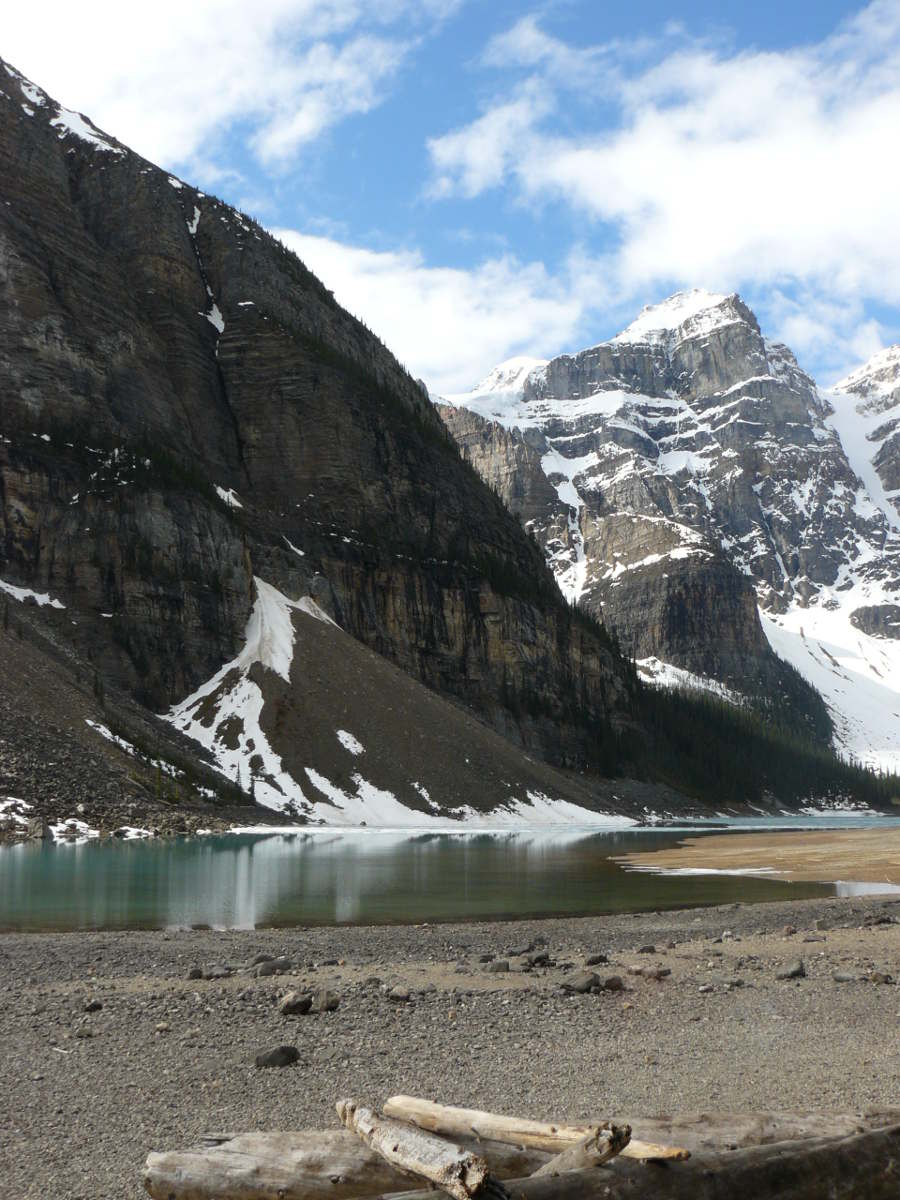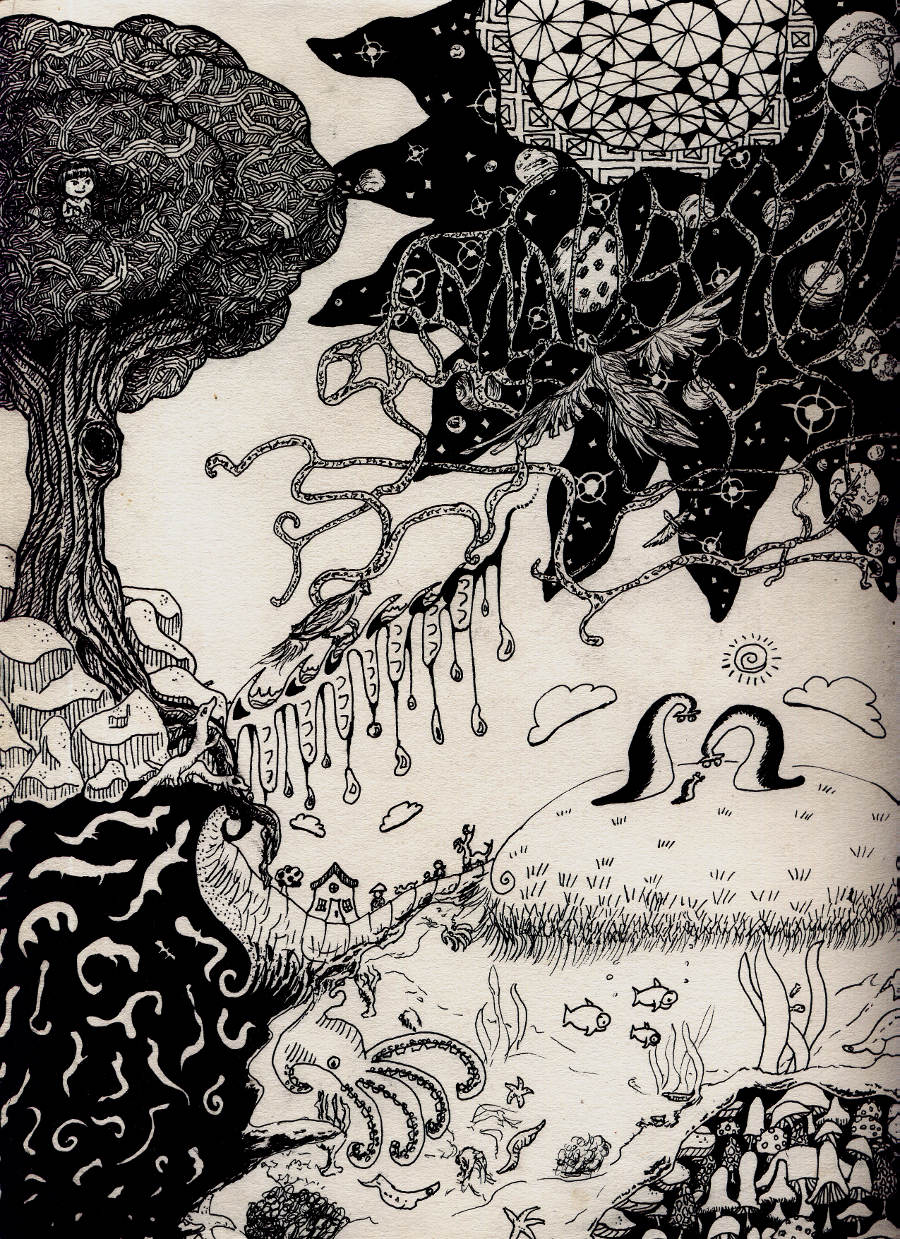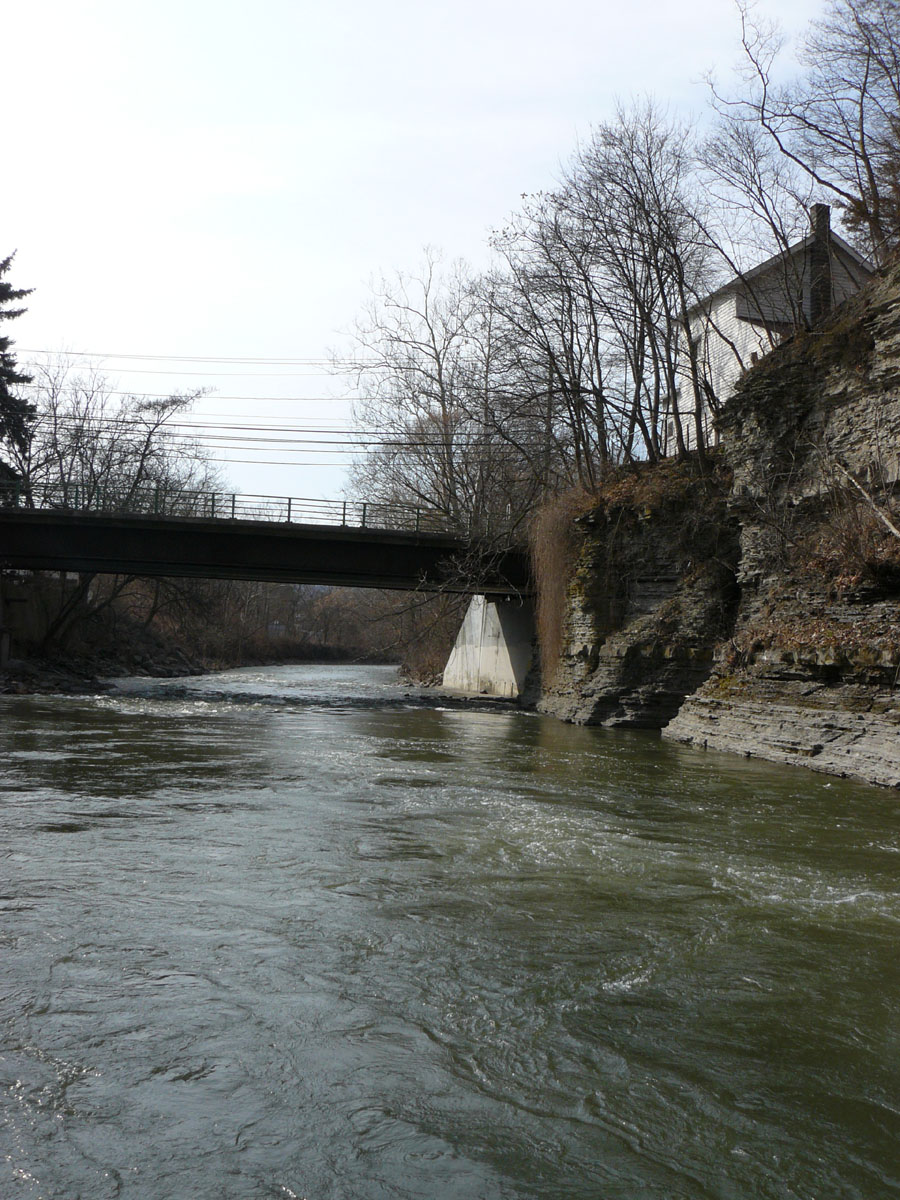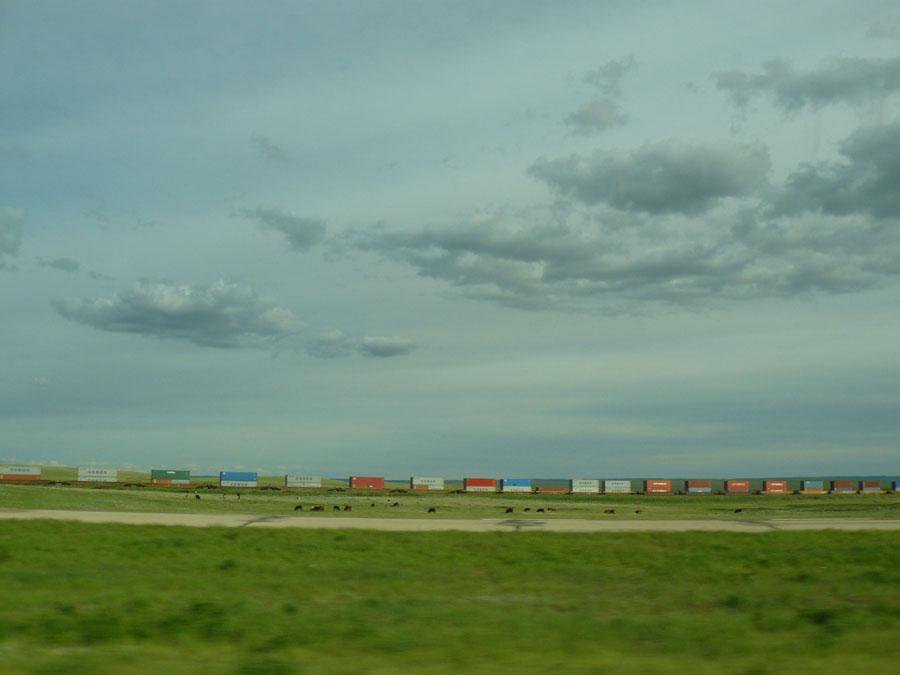 Location Taken: Lake Moraine, near Banff, Alberta, Canada
Location Taken: Lake Moraine, near Banff, Alberta, Canada
Time Taken: June 2010
I’m having trouble deciding on a topic today, partly because I keep getting distracted by my mom playing Skyrim right next to me.
So what the hey, time to chat about the Elder Scrolls series.
I’ve played just about all the games in this series. Arena was an important game for me developmentally. It came out when I was 8, the age when I switched from the biological-based development of childhood to the mental-based development of adults, when my personality was becoming fully solid in my head. I’d played video games before Arena, such as the Eye of the Beholder series, but I’d always played them with a lot of help from my parents and sister, asking for help killing scary monsters and mainly just puttering around not doing too much to get to the goal. Arena, I played on my own. My characters were my own and my adventures were my own. I still got help from my dad (he spotted a flaw in the mathmatics of the spell maker that let him make spells that were vastly overpowered), but it was still my quest. It was a different game than what it has formed into. Only 18 real dungeons, and bunches of cookie-cutter towns with little personality. The non-main-quest quests were randomly generated and simple. You could leave the towns and explore the world outside, but as fun as that was, it was also randomly generated and there was not much to do other than collect treasure in random dungeons. Still, it was a blast. There were some really fun aspects that didn’t make it into later games, such as the passwall spell (which let you remove a block of the dungeon so you could get through) and the holidays. I remember waiting until the Witches’ Festival on the 13th of Frostfall to do a whole bunch of item identifications at once. The passwall spell, alas, prevented the developers from crafting stories in the dungeons as they do now, and the holidays imply passing large amounts of in-game time, which worked in Arena where you were traveling all over a continent, but in the later games, you finish all the content in less than an in-game year. Still, even with all its comparative simplicity, Arena will always have a special spot in my history. Even if the final boss, Jagar Tharn, looked a little too much like the vampire monster so I was surprised when killing this monster triggered the ending cutscenes. He really didn’t seem too special of an enemy while I was fighting him…
Daggerfall was the second game in the series, and the first game I recall being highly excited about before it came out. It’s probably my least favorite in the series. It did have a truly impressive world, with 15,000 towns and a population of around 750,000. You could even walk from town to town. However, this came at the cost of just about all of those towns and people being personality-less and procedurely generated. The land between the towns was largely featureless plains with little charm and massive polygons. I barely ever left the towns. And I never got anywhere in the story. It was a pretty decent one, from what I heard, but there was one part near the beginning where you had to meet someone in a bar at a certain time, and I kept missing the meeting time. I don’t recall ever getting much past that point. Still, I did have fun playing it. It was the first game I’d played with an economy built in, complete with banks and scores of buyable houses. And it was the first Elder Scrolls game with the now-classic skill-based leveling, where the more you use a skill, the better you get at it. I also had great fun with the bugs in the game. Most of the dungeons had flaws in them that let you fall through the geometry. This was usually a problem, since this frequently meant you fell into the void the dungeon floated in, falling forever. However, if you deliberately jumped into the void, you could see the layout of the dungeon (which helped with secret doors) and even land on top of other sections of the dungeon, where if you found another flaw, you could slip back in and bypass whole sections of the dungeon.
Then the series took a sidestep for a few games. Battlespire had just one dungeon, a highly intricate one. I never got far in that dungeon, since it was a tough, buggy game and not really my cup of tea. Still, I had great fun playing the multiplayer option, fighting my sister in small arenas over and over again. It’s also where a lot of the daedric monsters that show up in the later games had their debut, such as scamps (though they aren’t in Skyrim due to story reasons). The other sidestep game was Redguard, the only game where you played a specific character rather than one you created yourself. In this case, you were Cyrus, a young Redguard man looking for his sister and getting caught up in a lot more than he thought. It was solidly in the Action-Adventure genre rather than the Role Playing Game genre, as well. It had all the wall-jumping, dungeon exploring, item buying elements you find in games like the Zelda series rather than the world-exploring, character-building fun of RPGs. It was really fun, but suffered because it had awful graphics. It fell in that awkward stage where 3D graphics were to the point that they were easier to create a game with than the old methods, but hadn’t come anywhere near looking good yet. A large number of decent games from this era suffered the same indignities as Redguard, such as flat faces, fingerless hands, and awkward animation. Still, for its time, it was a fun game. And between Battlespire and Redguard, the people at Bethesda Softworks learned some important things that carried into the later games, mainly in the realm of worldbuilding.
Morrowind was where the series came into its own. This was the first fully-crafted world in the series. Unlike the random generation of Arena and Daggerfall, here every plant and rock was planned out and placed. This of course meant a smaller world than Daggerfall in terms of population and land mass, but it felt much, much larger. The first time I walked from Seyda Neen (the starting city) to Balmora (where the main quest lead you) was magical. Cresting over the hill just east of Seyda Neen and seeing the first giant mushroom as I went from coastal swamps to the mushroom-tree-studded farmland around Pelagiad is something I’ll never forget. The maps of the later games were larger, but Morrowind had such a diversity of terrain, from volcanic fields studded with lava pools to largely uninhabited grasslands to the great city of Vivec, that it still feels larger in my memory. Some of it was that they didn’t have the fast travel option in this game, where you could just open up your menu, select a place, and travel there instantly. Instead, there were boats and spells and mages guilds teleportation networks and silt striders, and getting from one place to another usually involved visiting three towns along the way as you hopped from one form of transit to another. It was a challange to get around. And the story was fascinating, full of political intrigue and dungeon delving and prophecy that sent you all over the map. A lot of its high place in my memory is nostalgia, since it was the first game with the combination of highly-developed world and well-developed characters and quests. The later games had more technology put behind the world to make it feel more alive, but Morrowind still feels like one of most interesting, since it had a hefty alien feel in there with the strange vine houses of the Telvanni and the giant crab shell that housed the whole clan of the Redoran. There was a sense of a living world with all the mines and farms and kwama dens (where workers harvested eggs from giant insects) populating the folds of the land. And there was history, with the long-abandoned dwarven ruins full of automations and the daedric shrines filled with worshippers. There was even some moral choices just built in to the world, as there were slaves that you could free or buy from the slave markets, and the drug skooma was a real problem throughout the world. The expansions were quite solid and brought their own fun aspects. I loved building up the town of Raven Rock in Bloodmoon and filling up the museum of artifacts in Tribunal (though the best feature of that game was the packrat!). The games did have flaws, but they are ones that are only apparent when compared to later games, such as having to go through the hassle of opening up the chest interface whenever you want to pick a plant, unlike just clicking on them as later games do. Still, it is my favorite in the series.
Oblivion was the game that really got the series more notice from the general gaming populace. A large part of this was the more traditional setting and story, with large open forests and bandit dungeons and a tale of helping a young man become emperor while fighting off an invasion from what could easily be characterized as hell (it’s not, it’s the realm of Oblivion, but it is rather hellish). It was a larger world, and had better characters and quests than Morrowind, but well, it felt empty in comparison. There were very few small towns, and even fewer farms and mines. This did lend to the feeling of a world under seige, with the populace hiding out in the walled cities leaving the land empty of all but enemies in between, but still, it did feel empty. I had fun wandering the world and doing the quests, but it never felt as special as Morrowind did. I never did much with one of the expansions, the Knights of the Nine one, though I did own it. However, the other expansion, Shivering Isles, was a marvel. You go to the realm of the lord of madness and the land is as mad as its lord. It had all the alien feel that I loved in Morrowind (and it even had mushroom trees!), and had the added fun of dealing with a bunch of madmen and figuring out quests with a logic that twisted and turned like the land itself. It was great!
And finally we come to the most recent game, Skyrim. Set in the frozen mountains of the province of Skyrim, home to the half-barbarian Nords, lovers of cold and war and mead, it’s even more popular than Oblivion. The picture above, though it’s a photo of the Canadian Rockies, looks very similar to a large amount of the province of Skyrim. There’s more than just tall snowcovered mountains, though all of the land is that which you find in the north. It’s far more varied than Oblivion’s forests and plains, with glaciers in the north and large birch forests in the south. It doesn’t have the alien feel I loved in Morrowind and the Shivering Isles, but then, said alien feel doesn’t appeal to most people. It also has a stronger feel of a living world, with active farms and mines and markets in town. Still, there are large open spaces between the towns, reminding you that this is a harsh land to live in, one where every leek you grow involves removing three rocks and then protecting it from the snow. And there are dragons. Magnificant dragons, tough to fight and marvelous to watch flying in the distance. I actually haven’t gotten too far in the main quest, though. It’s not any fault of the quest. It’s more that I’ve had just a touch too much spoiled by watching my mom play and I’ve lost the sense of urgency and discovery that drives me to complete quests quickly. I’ll get to it someday. My mom, on the other hand, has completed the main quest several times. She’s been playing practically every day since the game came out nearly eight months ago, with occasional breaks when she goes on a trip and doesn’t bring the Xbox 360 with her. We’re on a trip now, but well, the people we’re visiting also have Skyrim for the Xbox and, well, she’s gotten the character she made yesterday up to level 18 or so already. Skyrim has enough content that she’s still finding new things to do and try hundreds and hundreds of hours into playing.
We’re probably in a bit of trouble when The Elder Scrolls Online comes out next year. That’ll have even more content, in a world we already love and know well. I’ll probably be part of the Ebonheart Pact, one of the three factions, since that contains two of my favorite races to play, the Nords and the lizard-folk Argonians. I just hope it doesn’t cost too much, since we’ll probably get at least two accounts, one for me and one for my Mom.




